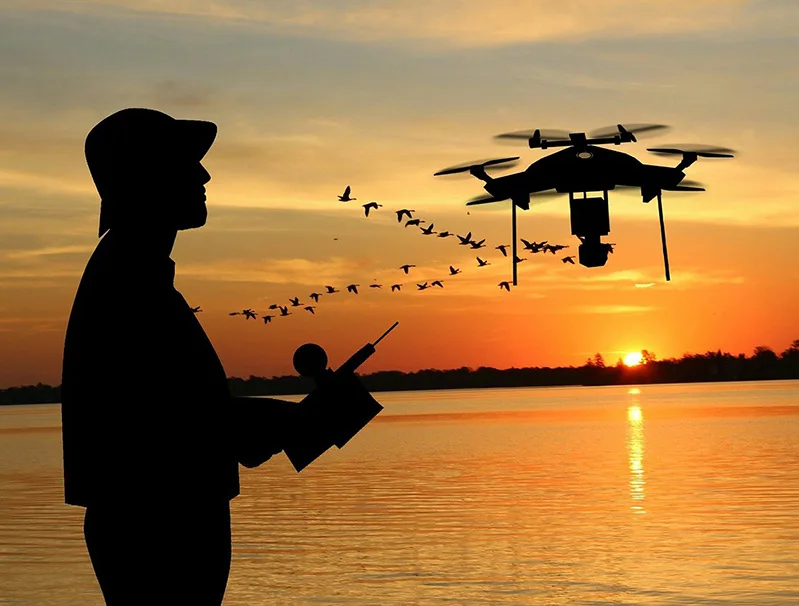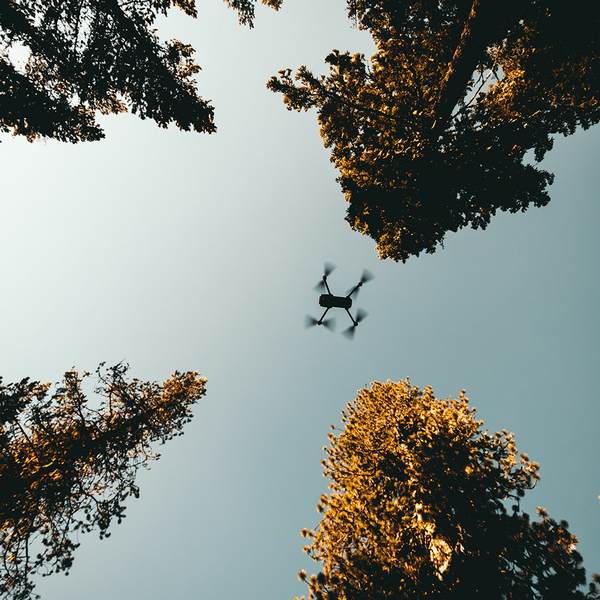Enhancing Environmental Monitoring with Drones – A Technological Revolution

In the ever-evolving landscape of environmental monitoring, the integration of drone technology has catalyzed a revolutionary shift, providing unparalleled capabilities to collect essential data efficiently and cost-effectively. This article will delve further into the groundbreaking applications, multifaceted benefits, and the vast potential that drones hold for fostering sustainable practices on a global scale.
Applications of Drones in Environmental Monitoring

1. Drones in Air Quality Assessment
The role of drones in environmental monitoring extends significantly to assessing air quality. Fitted with sophisticated sensors capable of detecting pollutants, drones contribute real-time data on air composition. This not only aids in the identification of pollution sources but also facilitates the formulation of targeted interventions, thereby playing a crucial role in comprehensive air quality management strategies.
2. Precision Agriculture
Drones have become indispensable in precision agriculture, offering a multifaceted approach to monitoring crop health, soil conditions, and water usage. This data-driven methodology empowers farmers to optimize resource utilization, reduce environmental impact, and enhance overall agricultural sustainability. The integration of drones in agriculture marks a transformative shift towards more efficient and environmentally conscious farming practices, ensuring a delicate balance between productivity and ecological responsibility.
3. Wildlife Conservation and Habitat Monitoring
In the realm of wildlife conservation, drones emerge as non-intrusive champions for monitoring both wildlife and their habitats. From tracking endangered species to identifying changes in ecosystems, drones significantly contribute to conservation efforts. Their ability to navigate challenging terrains without disturbing the natural balance positions drones as invaluable tools in the hands of conservationists. Drones, equipped with advanced imaging technology, allow for detailed surveys, aiding in the protection of biodiversity and the preservation of delicate ecosystems.
Benefits of Drone-Based Environmental Monitoring

1. Cost-Efficiency
Traditional environmental monitoring methods often come with substantial costs, limiting the extent of monitoring activities. Drones present a transformative and cost-effective alternative by reducing expenses related to human resources, equipment, and logistics. This newfound cost-efficiency democratizes access to advanced monitoring technologies, making them more accessible for various initiatives with budget constraints.
2. Accessibility in Challenging Terrains
One of the standout advantages of drone-based environmental monitoring is their ability to access remote or hazardous areas. Traditional methods would often fall short in these challenging terrains, be it dense forests or disaster-stricken regions. The accessibility that drones provide enables comprehensive monitoring without endangering human lives, making them an indispensable asset in disaster response and environmental assessment efforts.
3. Real-Time Data Collection
The hallmark of drone technology lies in its ability to collect real-time data, providing dynamic insights into environmental changes. This feature proves invaluable in addressing dynamic environmental challenges, allowing for swift responses to emerging issues. Real-time data collection enhances decision-making processes, providing timely insights crucial for effective environmental management and immediate action in response to unfolding situations.
Industry Trends in Drone-Based Environmental Monitoring

For a comprehensive understanding of the landscape, staying informed about current industry trends is imperative. Recent reports project a significant growth trajectory for the drone-based environmental monitoring market, estimating an increase from $11.9 billion in 2023 to $13.9 billion in 2024, representing a compound annual growth rate (CAGR) of 16.8%. This surge is attributed to heightened awareness of environmental issues and an increasing adoption of advanced technologies.
The market’s growth is not only indicative of the increasing importance placed on environmental monitoring but also highlights the trust and reliance placed in drone technology for these critical tasks. Drones are becoming central to environmental stewardship, serving as indispensable tools for organizations, governments, and environmental agencies globally.
Challenges and Future Outlook
While the benefits of drone-based environmental monitoring are evident, challenges persist and must be addressed for the continued success of this technological revolution. Regulatory frameworks, privacy concerns, and technical limitations remain prominent obstacles. Achieving widespread adoption and acceptance of drone technology in environmental monitoring requires collaborative efforts among industry stakeholders, policymakers, and environmentalists.
The future outlook for drone-based environmental monitoring holds promise, propelled by ongoing advancements in sensor technology, artificial intelligence, and data analytics. As sensor capabilities improve, drones will become even more adept at capturing detailed and nuanced environmental data. The integration of artificial intelligence will enhance data analysis, providing more meaningful insights and facilitating quicker, more informed decision-making.
The collaboration between humans and technology will continue to evolve, emphasizing the need for interdisciplinary approaches to address complex environmental challenges. As drones become more sophisticated and capable, their role in environmental monitoring will likely expand, contributing to a more comprehensive understanding of our planet’s health and resilience.
In the pursuit of sustainable practices, the marriage of environmental monitoring and drone technology emerges as a pivotal alliance. By harnessing the power of drones, we not only elevate our ability to understand and address environmental challenges but also pave the way for a more sustainable and resilient future. As we navigate this technological frontier, the integration of drones in environmental monitoring stands as a testament to human ingenuity in the service of the planet, showcasing our collective commitment to environmental stewardship and the well-being of our shared home.




